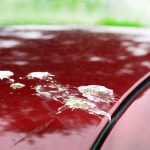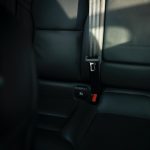As we drive, our cars can pick up all kinds of grime, grease, and dirt. While a regular car wash will remove the majority, some substances will need a more specialised clean.
Car decontamination involves removing these stubborn substances – bug residue, glue, tree sap, bird mess, brake dust, iron deposits and road tar are all common contaminates that usually require specialist cleaning, especially if they’ve been left for a while.
In this blog, we’ll talk you through some of the best car paint decontamination sprays and products, and how to use them.
Step one: Wash your car
Before you start the decontamination process, you should make sure your car is clean and dry. Don’t apply any specialist products or sealants at this stage, just use your favourite car shampoo and wash mitt or sponge, then dry with a microfibre towel.
Need a helping hand? Check out our guide to washing your car.
Step two: Remove tar spots
First up, we’re starting with chemical decontamination. This just means using a solvent product to lift contaminants instead of a physical method like a clay bar (we’ll cover this later).
We recommend tackling tar spots first since these can often hide other contaminants underneath. Tar is the sticky substance used to fill potholes and re-cover roads, and it can quickly adhere to your paintwork if it’s flicked up by passing traffic.
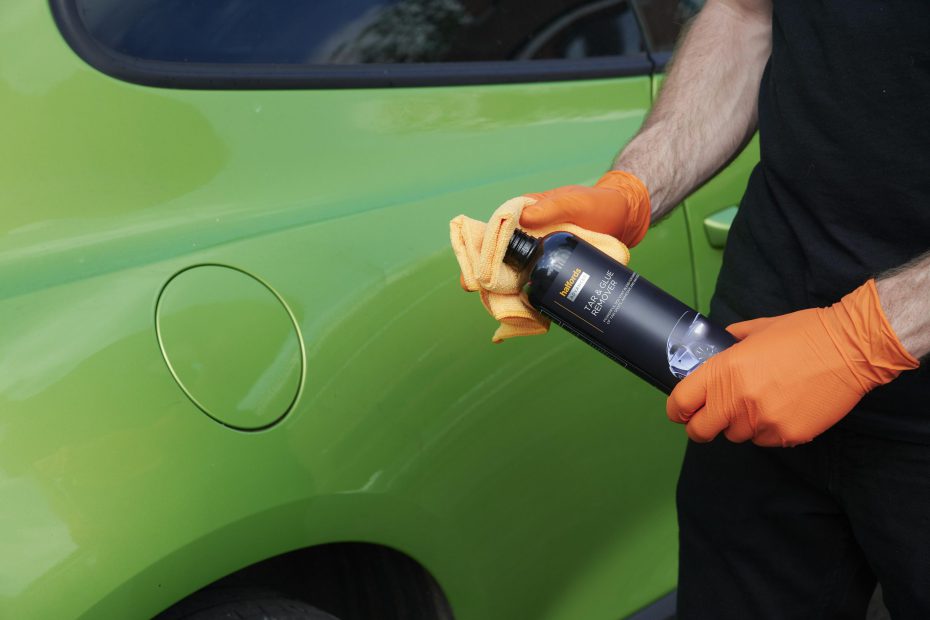
To remove it, you’ll need a solvent cleaner. Our favourite is the Halfords Advanced Tar & Glue Remover, which dissolves sticky residues without damaging paintwork. Use a clean microfibre cloth to apply the cleaner to your tar spots for a maximum of a minute, gently rubbing over more stubborn spots. Then just wipe away any residue and dry the surface with a clean cloth.
Step three: Decontamination wash
Next, a thorough decontamination wash will lift ingrained iron contaminants. These tiny ferrous metal particles can embed into your paintwork from a variety of places, most commonly from your own and other vehicles’ brake dust.
It can’t be removed by standard washing, so you’ll need to use a decontamination car shampoo or spray. The Autoglym Magma iron decontamination car spray lifts iron fallout from your wheels and paintwork, without damaging your finish. It’s pH neutral and acid-free and uses colour-changing technology to show you exactly where it’s cleaning.
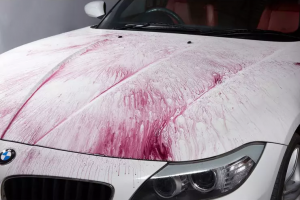
Just spray it on, wait around 5 minutes for it to dislodge the particles, and then rinse thoroughly. With these ferrous contaminants removed, you should rewash your car to remove any chemical cleaning residues before moving to the physical decontamination.
Step four: Clay bar treatment
With the chemical treatments done, physical decontamination involves manually pulling out embedded contaminants, usually using a clay bar. This handy substance is common in professional details, to get the paintwork as silky smooth as possible before polishing and waxing. It works well for lifting contaminants like tree sap, road grit, and other embedded substances.
The key to a successful clay car cleaning is to use a lubricant, which helps the clay to slide over your paintwork – this can be a dedicated lubricant, a water-based car detailer, or even a spray bottle of water mixed with a little car shampoo.
To give you everything in one place, a clay kit is a great choice for beginners. The Autoglym Clay Surface Detailing Clay Kit comes with a lubricant spray included, as well as a clay bar and a finishing polish. If you already have something suitable to use as lubricant, you can pick up a clay bar on its own, like the Halfords Clay Bar.
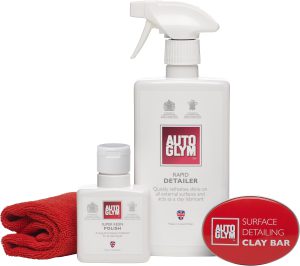
It’s a simple process – tear off a small piece of clay and roll it in your hand until it’s malleable, then flatten it into a disc. Spray your lubricant onto a section of your paintwork and work the clay over the area using light pressure. You shouldn’t need to push hard and be sure to reapply the lubricant if it begins to feel difficult to move.
You can turn the clay over once the first side is fully covered in grime and go back over any stubborn spots. Once you’re done, you should have a silky-smooth finish that’s ready for polishing.
Clay bar treatment is also a good idea if you’ve bought a brand-new car. Although it’s not racked up the miles yet, it’s likely been transported by road or railway, or even sat in a yard where airborne contaminants can reach it. To keep your paintwork at its best, give it a clay bar treatment – you might be surprised how much it picks up.
Step five: Finish your detail
With all your contaminants removed, you can lock in your results with a wax, polish, or sealant. Apply your favourite product and enjoy a glossy, contaminate-free surface.
Now you should be able to tackle all kinds of car contaminants. If you need help removing something more stubborn like rust, check out our car rust treatment blog. Or if you’re battling your interior, learn how to remove car mould.
